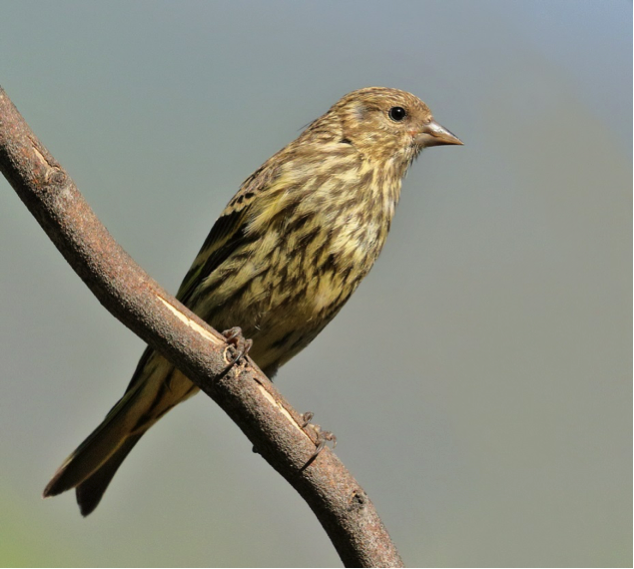By Bob Walker
The Pine Siskin (Spinus pinus) is one of our most common birds. It is a small finch with a sharp conical bill and a forked tail, Its body is streaked with brown and often has an overall yellowish cast. They have quite a bit of yellow under their wings, which you might notice while they are in flight or fluttering from one perch to another. Many small finches can be difficult to differentiate. The Pine Siskin is often confused with the female House Finch, a larger bird with a rounder tail and a heavier, slightly curved bill. House Finches also lack the yellow cast and underside of the wings visible on Pine Siskins.

Pine Siskins travel in large nomadic flocks, and although we may see them at any time of the year, the flocks wander unpredictably. At any given time, you might see many of them or maybe none at all. When a flock of Pine Siskins is in your area, you can hear their distinctive “zipper” call, “zzzzzzzzzzzrreeee.”
Pine Siskins will join in mixed flocks with House Finches, Lesser Goldfinches, and American Goldfinches, and even though they are the smallest of these birds, they are nevertheless the most aggressive at feeders, often challenging other Siskins or finches when approached too closely. If you want to attract these birds to your own feeders, put out Nyjer thistle seed, or shelled sunflower seeds. They also feed readily on local plant seeds in the fall – sunflowers, asters, or coneflowers.
Find more detailed articles about Pine Siskins on these web pages: identify.whatbird.com and allaboutbirds.org.
Enjoy more beautiful photos of Pine Siskins on these websites: briansmallphoto.com and tringa.org.


Bob, its great to have such a clear comparison picture (how did you ever get them to pose). I will start watching for them.
My son, Alex, and I called a Pine Siskin to the window using our audoban bird call last weekend. Once he saw us (jig is up) and he flew off. Alex said its because I told the birds with our bird call, that our food was “no good”.